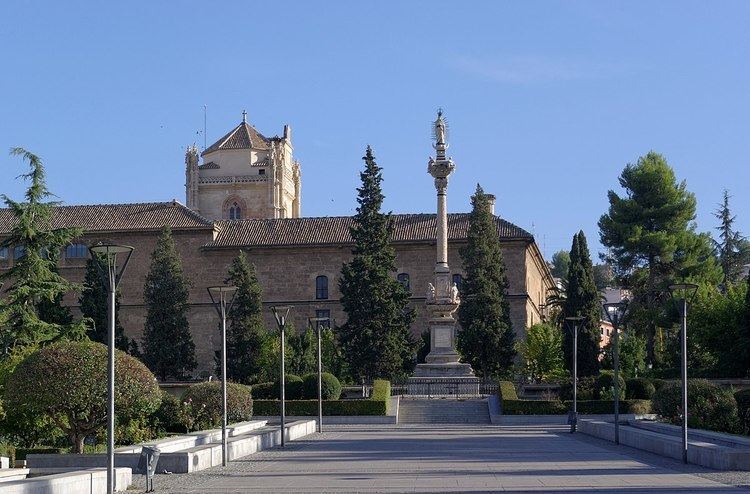Established 1531 Administrative staff 3,400 Phone +34 958 24 30 00 Total enrollment 57,193 (2015) | Endowment 395,663,000 € Students 80,000 Rector Pilar Aranda Ramírez | |
 | ||
Founder Charles V, Holy Roman Emperor Founded 14 July 1531, Granada, Spain Notable alumni Similar University of Málaga, University of Seville, University of Jaén, Complutense University of Madrid, University of Almería Profiles | ||
Welcome to the university of granada
The University of Granada (Spanish: Universidad de Granada, UGR) is a public university located in the city of Granada, Spain, and founded in 1531 by Emperor Charles V. With approximately 80,000 students, it is the fourth largest university in Spain. Apart from the city of Granada, UGR also has campuses in Northern Africa (Ceuta and Melilla).
Contents
- Welcome to the university of granada
- University of granada
- History
- Rankings
- Centres and Qualifications
- Centres located in Granada
- Campus located in Ceuta
- Campus located in Melilla
- School for Modern Languages
- Famous alumni
- References
Every year over 2,000 European students enroll in UGR through the Erasmus Programme, making it the most popular European destination. The university's Center for Modern Languages (CLM) receives over 10,000 international students each year. In 2014, UGR was voted the best Spanish university by international students.
University of granada
History
In 1526 a college was founded in Granada by Holy Roman Emperor Charles V for the teaching of logic, philosophy, theology and canon law. On 14 July 1531, the establishment of a studium generale with the faculties of theology, arts and canon law was granted by a papal bull by Clement VII, marking the birth hour of the university.
The university has an important heritage thanks to its policy of using buildings of historical and cultural value such as the former madrasah and the former Royal Hospital of Granada. Furthermore, the university has major new facilities committed to innovation, such as the Parque Tecnológico de Ciencias de la Salud.
Rankings
According to several rankings, the University of Granada ranks among top ten best Spanish universities and holds first place in Translation and Interpreting studies. It is also considered the national leader in Computer Science Engineering. UGR also plays a major role in scientific output, placing high in national ranks and being one of the best world universities in computing and mathematics studies.
Centres and Qualifications
UGR is composed of 5 Schools, 22 Faculties and 116 Departments responsible for teaching and researching into specific subject areas. They are spread over five different campuses in the city of Granada (Centro, Cartuja, Fuentenueva, Aynadamar and Ciencias de la Salud), plus two more campuses located in the cities of Ceuta and Melilla, Spanish territories in Northern Africa.
Centres located in Granada
Campus located in Ceuta
Campus located in Melilla
The University of Granada also offers a wide range of postgraduate programmes (Master's Degrees, Doctorate Programmes and UGR's Postgraduate studies), made up of studies adapted to the European model.
School for Modern Languages
The UGR began admitting international students in 1992 with the founding of the School for Modern Languages (Centro de Lenguas Modernas). As of 2009-2010, there were some 5,000 international students, including Erasmus programme exchange students from the European Union. The CLM has agreements with 20 universities and study abroad organizations in the U.S. and in Canada in order to bring North Americans to the UGR, including the American Institute For Foreign Study, Arcadia University, International Studies Abroad and the University of Delaware.
